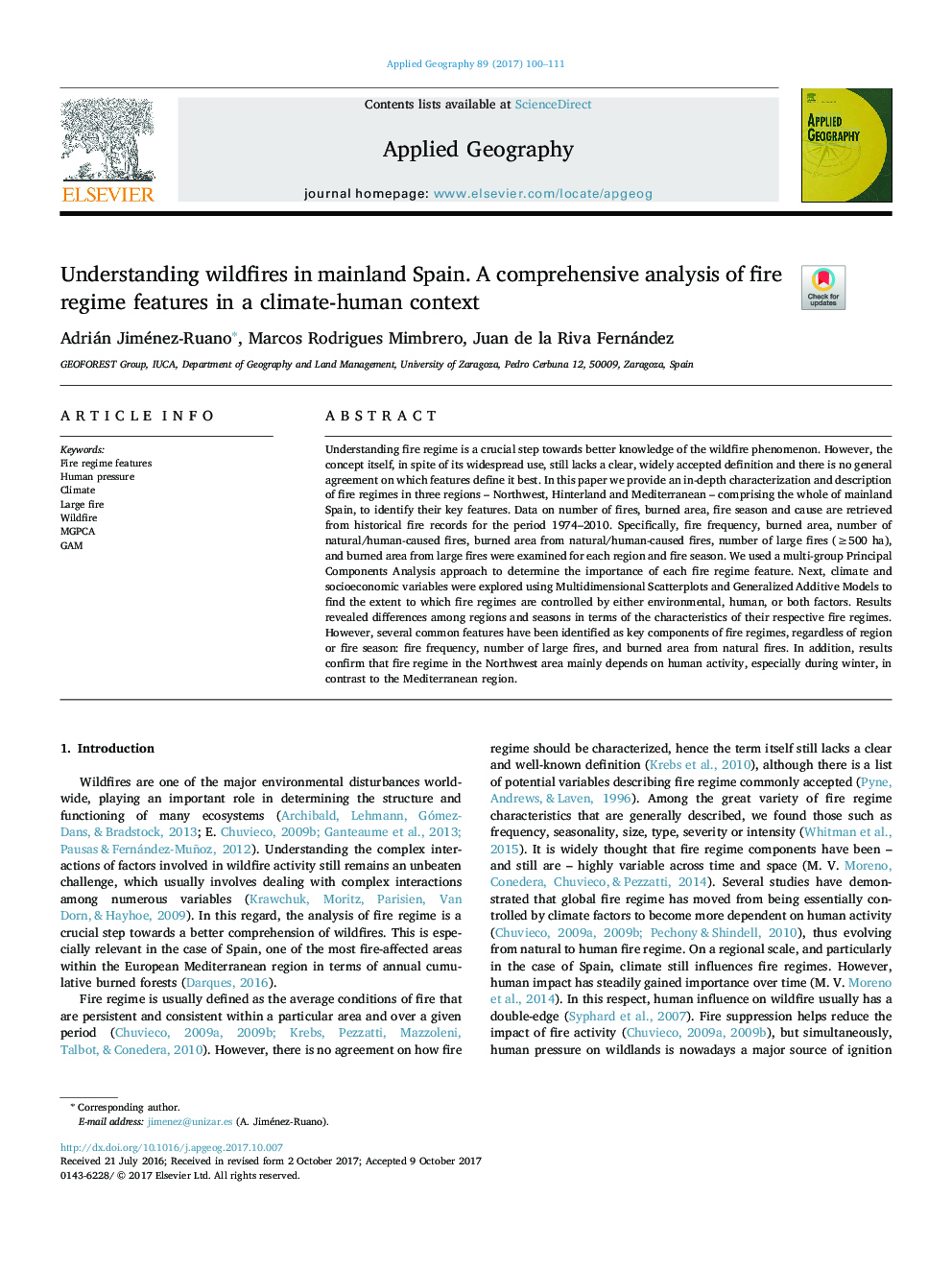| Article ID | Journal | Published Year | Pages | File Type |
|---|---|---|---|---|
| 6538386 | Applied Geography | 2017 | 12 Pages |
Abstract
Understanding fire regime is a crucial step towards better knowledge of the wildfire phenomenon. However, the concept itself, in spite of its widespread use, still lacks a clear, widely accepted definition and there is no general agreement on which features define it best. In this paper we provide an in-depth characterization and description of fire regimes in three regions - Northwest, Hinterland and Mediterranean - comprising the whole of mainland Spain, to identify their key features. Data on number of fires, burned area, fire season and cause are retrieved from historical fire records for the period 1974-2010. Specifically, fire frequency, burned area, number of natural/human-caused fires, burned area from natural/human-caused fires, number of large fires (â¥500 ha), and burned area from large fires were examined for each region and fire season. We used a multi-group Principal Components Analysis approach to determine the importance of each fire regime feature. Next, climate and socioeconomic variables were explored using Multidimensional Scatterplots and Generalized Additive Models to find the extent to which fire regimes are controlled by either environmental, human, or both factors. Results revealed differences among regions and seasons in terms of the characteristics of their respective fire regimes. However, several common features have been identified as key components of fire regimes, regardless of region or fire season: fire frequency, number of large fires, and burned area from natural fires. In addition, results confirm that fire regime in the Northwest area mainly depends on human activity, especially during winter, in contrast to the Mediterranean region.
Keywords
Related Topics
Life Sciences
Agricultural and Biological Sciences
Forestry
Authors
Adrián Jiménez-Ruano, Marcos Rodrigues Mimbrero, Juan de la Riva Fernández,
